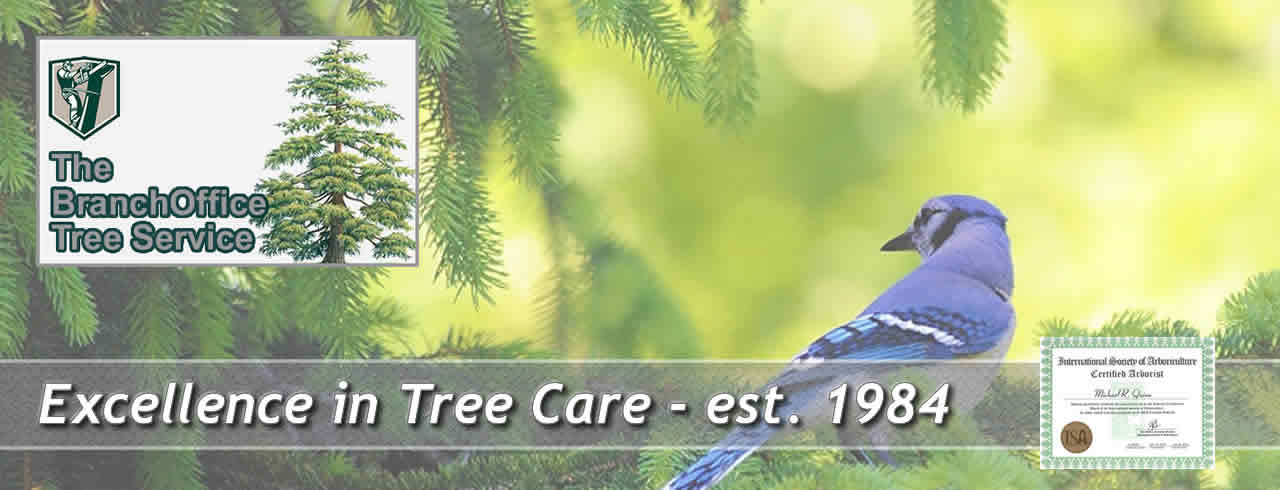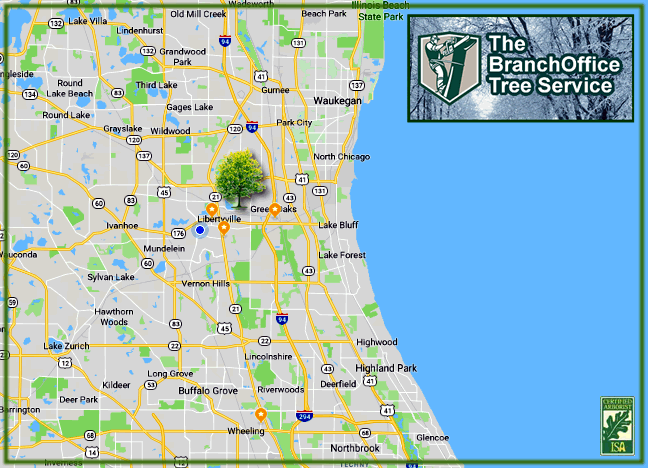Emerald Ash Borer Control and Information.
The Emerald Ash Borer (EAB) is an insect that attacks and kills ash trees and is now considered the most destructive forest pest ever seen in North America. The adult beetle is dark metallic green in color, 1/2 inch-long and 1/8 inch wide that live outside of trees during the summer months. The larvae are grub or worm-like pests that live underneath the bark of ash trees. When the larvae begin to tunnel under the tree’s bark it compromises the health and life of the tree. EAB is typically spread through transported firewood. Because of this extra precautions are strongly encouraged when moving and transporting firewood. EAB can continue to emerge from the wood for two years after cutting of the tree. To avoid spreading EAB, it is recommended to split and leave the wood to age near where you cut the tree for two summers. After two years of drying, EAB that may have been within the wood will have emerged or died.
How is Emerald Ash Borer Prevented?
When homeowners find themselves in infested areas, they must now make the difficult choice of either treating their ash trees each year with insecticide or let them succumb to attack and eventually pay for their removal. There are many chemical products available to prevent EAB infestations. Unfortunately, there are very few products available in the market that is simple for homeowners to use. The most effective way to prevent EAB is to have prevention products injected into the trunk. Due to the complexity of this, it is recommended to hire an arborist to inject ash tree trunks in late May or spraying the trunk and foliage with insecticide in early June and again in early July.
Signs and Symptoms of EAB:
Crown Deterioration: Deterioration of the upper and outer crown begins after several years of EAB infestation. Trees start to show dead branches throughout the canopy, often beginning at the top. Larval feeding promotes the disruption of nutrient and water flow to the upper canopy, which often results in leaf loss. Leaves at the top of the tree will appear to be thin and discolored.
Woodpecker feeding: Woodpeckers eat emerald ash borer larvae that are under the bark. If there are large quantities of larvae under the bark the woodpecker damage can make it look like strips of bark have been pulled off of the tree.
D-shaped holes within bark: As adults emerge from under the bark of the tree they create a D-shaped emergence hole that is about 1/8 inch in diameter.




